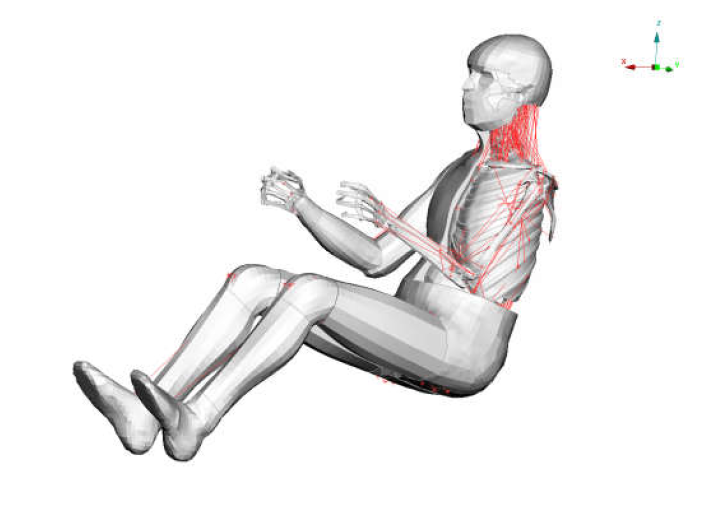SAFER’s Active human body model for virtual occupant response, step 3, is now finalized
In this project SAFER’s active human model has been further developed. The overall aim has been to develop a model for the whole crash sequence and important steps have been taken on muscle activation. This project is an important building block in SAFER's overall vision of human model's importance in future car development.
The model opens up new opportunities to evaluate the sequence before the collision, to evaluate the risk of injuries in the crash. The SAFER HBM (Human Body Model) is unique and provides the industrial partners with a highly competitive tool for integrated safety product development.
Oblique and lateral muscle control
The aim of the project was to develop a methodology to enhance the already existing Active HBM (A-HBM) by adding oblique and lateral muscle control, validate the model and use it in application areas for safety improvements. The project has further developed the A-HBM’s capability of predicting humanlike kinematics in avoidance maneuvers. Specifically, a methodology including oblique and lateral muscle control was developed, and implemented into the SAFER HBM, making it capable of kinematics in the horizontal plane. Extensive validation data for lane change maneuvers, with and without braking, has been gathered and initial validation of the enhanced model was made including braking as well as lane change maneuvers. In addition, industrial integration of the model was carried out during the project, and applied in areas for safety improvements by the industrial partners.
SAFER HBM 9.0: With lateral direction of motions and injury prediction
At the end of the project, the team has put together the active model from the A-HBM project with the latest status of the I-HBM (injury) model, which means that the model has muscle control and can also predict injury as a seamless tool. In previous work in A-HBM step 1 and 2, the model was developed for braking. In step 3, the lateral directions of motion have also been included. This means that the model, which actually is the version 9.0 of SAFER’s human body model, can be used for combinations of pre-crash braking and steering followed by impact in different directions.
Valuable results for SAFER’s partners
The SAFER HBM is unique and provides the industrial partners with a highly competitive tool for integrated safety product development. The project has resulted in 22 publications (13 peer-reviewed publications), conference presentations, and a PhD thesis. The work has reached high scientific interest, creating important international cooperation. The SAFER partners involved in the project have been Autoliv, Chalmers and Volvo Cars.

